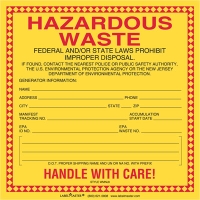- in Chapter 6.8 (ADR Tanks) in case of modification of a tanks, the type approval of modified tanks can be limited to the modified elements.
Requirements for marking tanks will be the following (6.8.2.5.2):
- Name of the owner or operator
- "Demountable tank"
- Tare and maximum permissible gross mass of the tank
- For substances according to 4.3.4.1.3, the proper shipping name of the substance(s) accepted for carriage
- The tank code
- For substances other than those according to 4.3.4.1.3, the codes of all special provisions TC and TE (Column 13 Table A of Chapter 3.2) for the substances to be carried in the tank.
- Nel capitolo 6.8 (Cisterne e CGEM metallici) in caso di modifica di una cisterna, l'approvazione di tipo si potrà limitare alle parti oggetto di modifica. La marcatura delle cisterne smontabili sarà la seguente:
- Nome del proprietario o dell'esercente
- "Cisterna smontabile"
- Tara e massa lorda massima autorizzata
- Per le sostanze secondo il 4.3.4.1.3 la designazione ufficiale e i codici delle disposizioni TC e TE (Colonna 13 Tabella A Capitolo 3.2) per le sostanze che da trasportarsi in cisterna
- Il codice cisterna
- Per le sostanze diverse da quelle secondo 4.3.4.1.3, i codici di tutte le disposizioni speciali TC e TE (Colonna 13 Tabella A del capitolo 3.2) per le materie da trasportare in cisterna.
To learn more, see ADR 2013 on unece.org.
Per ulteriori informazioni consultare l'ADR 2013 sul sito unece.org.






